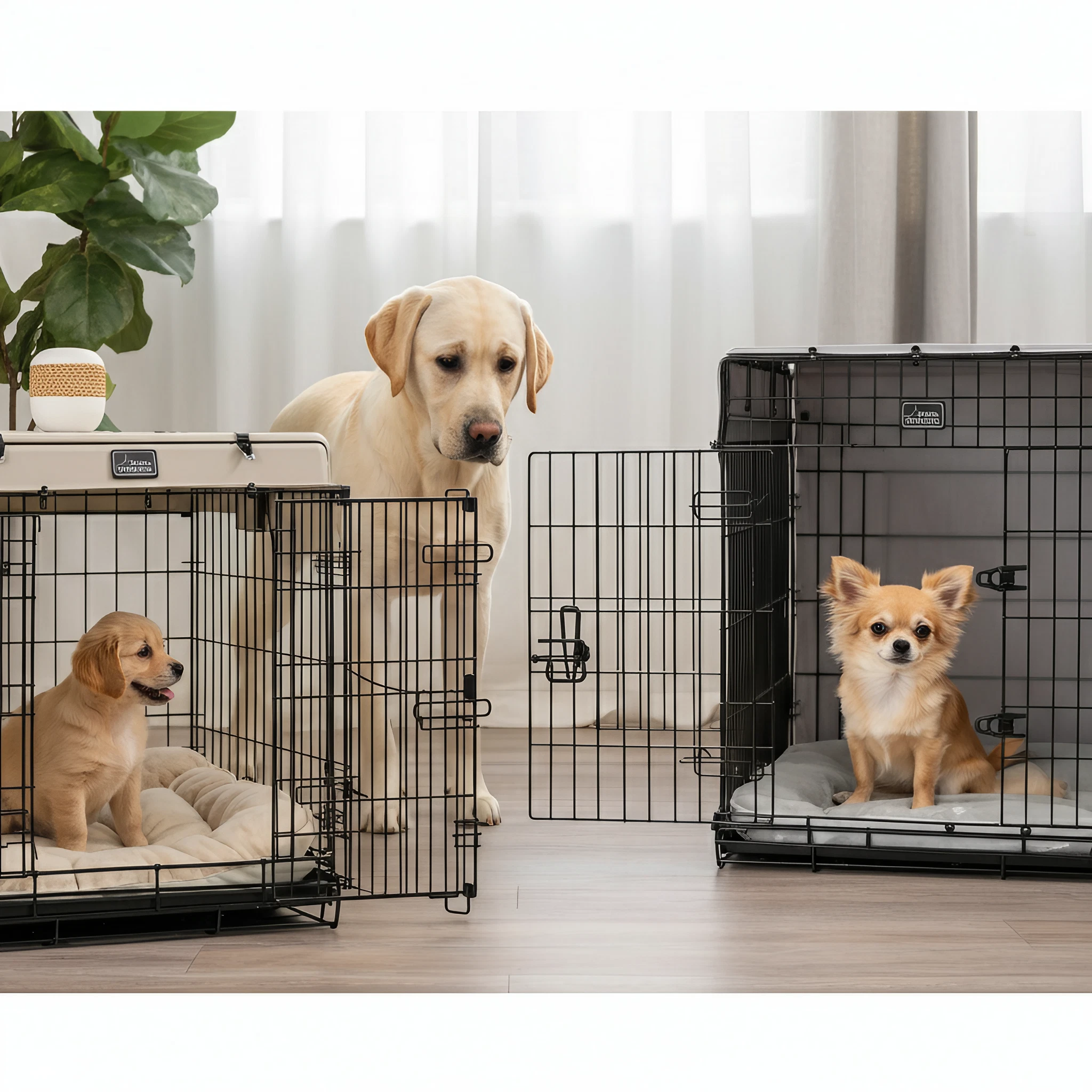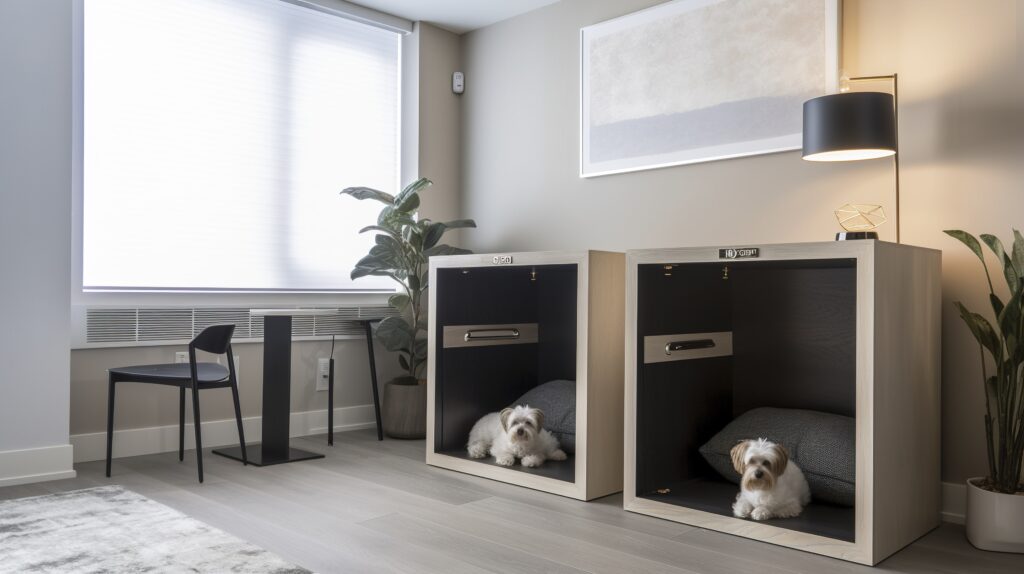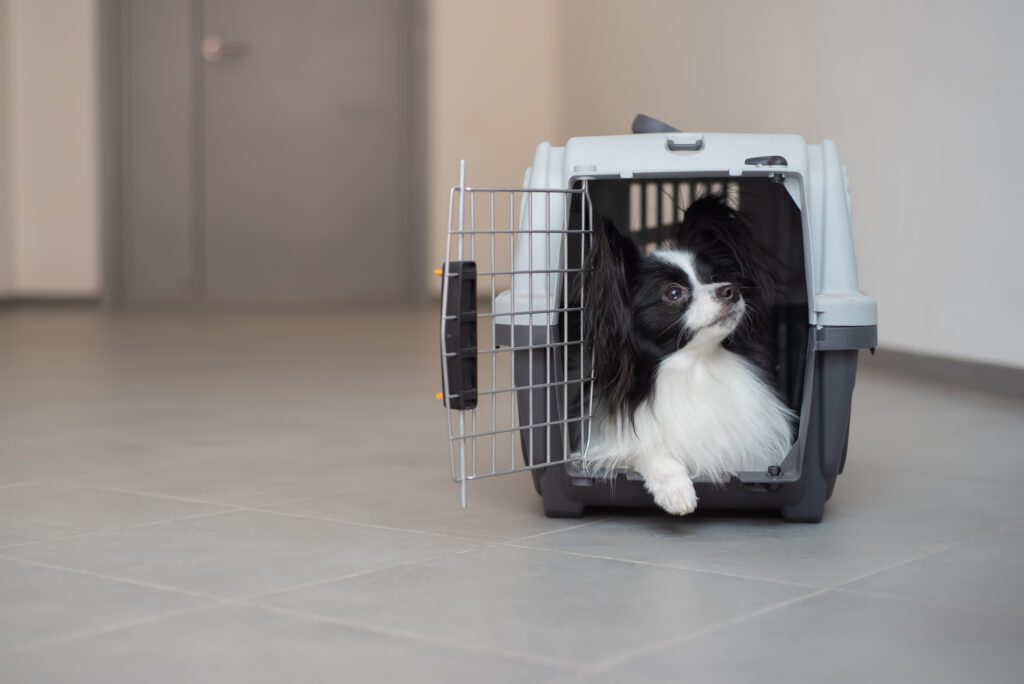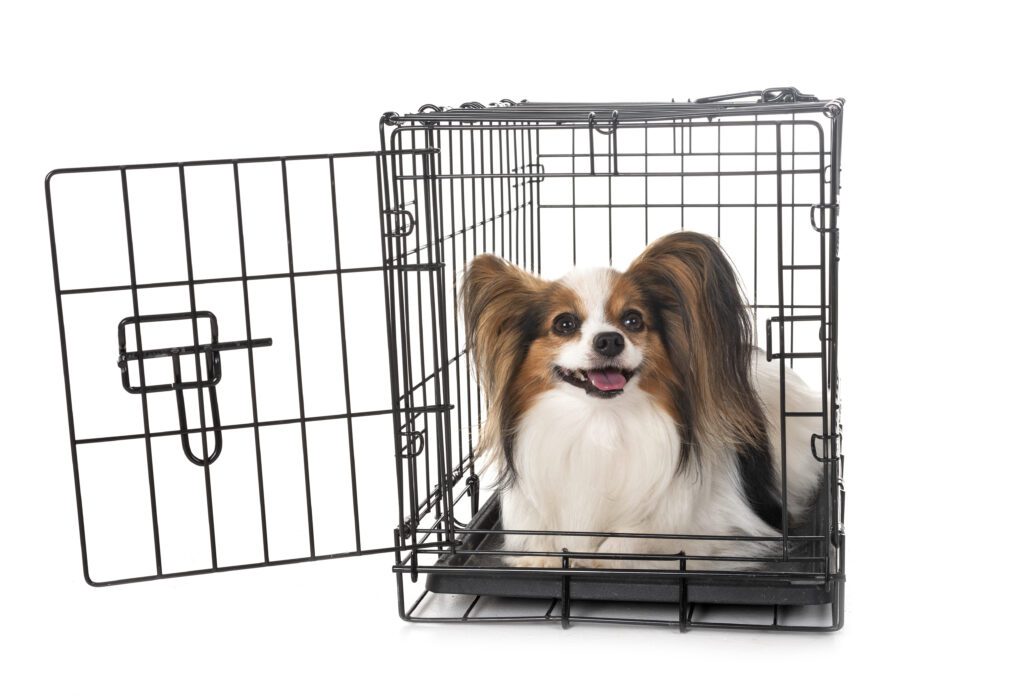
Wooden vs. Plastic vs. Metal Dog Crates : – Choosing the right dog crate is an essential decision for any pet owner. Crates serve as a safe space for your dog and aid with training, travel, and even anxiety. But with so many options, how do you decide which suits your furry friend best? Should you choose a stylish wooden crate, an ultra-portable plastic, or a durable metal version?
This blog breaks down the pros and cons of wooden, plastic, and metal dog crates to help you make an informed choice. We’ll also discuss matching the perfect crate to your dog’s needs.
Whether you’re looking for a durable dog crate for a large breed, a travel-friendly crate, or simply a stylish crate to complement your home, we’ve got you covered.
Wooden vs. Plastic vs. Metal Dog Crates: (Wooden Dog Crates)

If you care about aesthetics and functionality, wooden dog crates fit the bill. These crates are designed to blend seamlessly with your home décor and often double as functional furniture.
Pros:
- Aesthetic Appeal
Wooden crates look more like high-end furniture than traditional pet products. They fit well in living rooms and complement modern or classic home interiors.
- Sturdy and Durable
Wood is a solid material that can withstand moderate wear and tear, offering a long-lasting solution for non-destructive dogs.
- Multi-Purpose Use
Many wooden crates can double as coffee tables, nightstands, or end tables, making them a functional addition to your home.
Cons:
- Heavy and Less Portable
Due to their weight, wooden crates are not easy to move around, making them unsuitable for travel or frequent relocations.
- Not Ideal for Chewers
For dogs prone to chewing, wood crates are a poor choice. They can splinter or become damaged, which isn’t safe for your pup.
- Higher Cost
Wooden crates generally have a higher price tag than plastic or metal options, making them less budget-friendly.
Best for:
Pet parents who prioritize style and have calm, less destructive dogs. One caveat—skip wooden crates if your dog enjoys chewing on furniture.
Plastic Dog Crates

Plastic crates are popular for their portability, making them a favorite among travelers and pet parents needing flexible solutions.
Pros:
- Lightweight and Portable
Plastic crates are easy to move, making them great for home and travel. Many are designed to meet airline requirements, perfect for jet-setting pups.
- Cozy and Den-Like
The enclosed structure of plastic crates creates a den-like environment, making dogs feel safe and secure.
- Travel-Friendly
Options like airline-approved plastic crates provide pet-safe travel solutions, ensuring your dog’s comfort.
Cons:
- Can Retain Odors
Plastic can trap smells over time, which requires thorough cleaning to maintain hygiene.
- Less Durable for Heavy Chewers
Plastic may crack or break under the pressure of a strong chewer, reducing its lifespan.
- Limited Ventilation
The enclosed design can restrict airflow, making it less suitable for warmer climates or long periods of confinement.
Best for:
Pet parents on the move. If you need a travel-friendly dog crate, plastic is a practical choice. However, it’s not ideal for dogs who love to chew.
Metal Dog Crates

Metal dog crates are the ultimate heavy-duty option, combining durability, versatility, and excellent airflow.
Pros:
- Highly Durable and Escape-Proof
Metal crates can withstand the strength of even the most persistent escape artist. They’re perfect for large, heavy-duty dogs.
- Great Ventilation
The open design ensures proper airflow, ideal for dogs in warmer climates.
- Foldable and Space-Saving
Metal crates often come with foldable designs, making them easy to store when not in use.
Cons:
- Noisy
Metal can produce noise when dogs move around, which might be bothersome in quiet households.
- Prone to Rust Over Time
Some models may rust if not maintained properly, especially those left outdoors.
- Less Stylish
Metal crates prioritize functionality over aesthetics and may not blend well with home décor.
Best for:
Owners of large or powerful dogs who need an escape-proof dog crate or a durable solution for high-energy pups.
Which One is Best for Your Dog?
The best type of crate depends on your dog’s size, temperament, and lifestyle. Here’s a quick guide to help you decide:
- For Calm, Non-Chewers:
If you want a stylish, furniture-like solution that fits seamlessly into your home, opt for a wooden dog crate.
- For Travel Lovers:
Choose a lightweight plastic crate if you often travel with your pup or need a cozy, den-like environment for them.
- For Strong or High-Energy Dogs:
A metal crate is your go-to for durability and safety. It’s beneficial for large breeds or dogs with escape tendencies.
Additional Factors to Consider:
- Dog’s Size: A large dog will need a heavy-duty metal dog crate, while smaller breeds might prefer the coziness of plastic.
- Chewing Habit: If your dog is a chewer, skip wooden or lightweight plastic crates.
- Your Lifestyle: Frequent movers or travelers will benefit from portable plastic options, while homebodies may appreciate the beauty of a wooden choice.
Choose the Right Crate for Your Best Friend
A dog crate isn’t just a containment tool—it’s a safe space that provides comfort, security, and a sense of belonging. By considering your dog’s unique needs and your lifestyle, you can pick the option that works best for both of you.
Remember, no matter the material, the right crate should prioritize your dog’s safety and comfort. If unsure, consult a trainer or veterinarian for tailored advice.
Happy crate shopping—and here’s to making your pup’s new home as cozy as possible!


